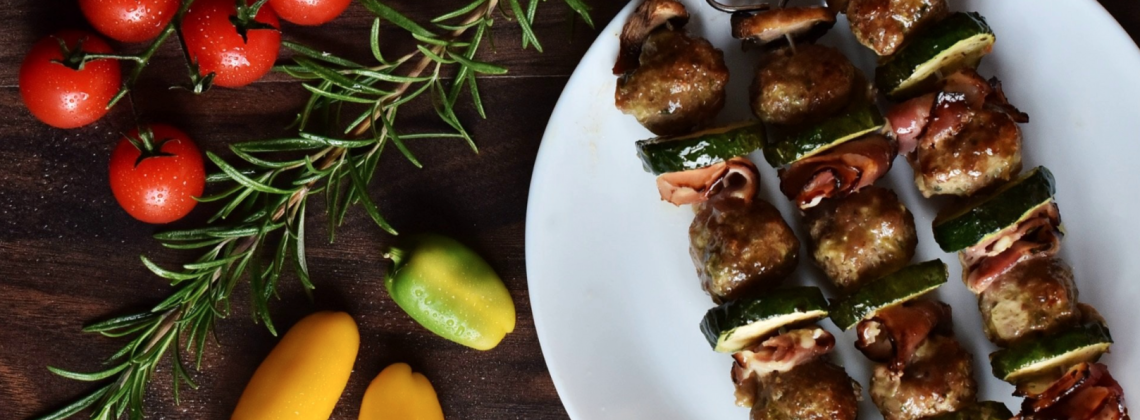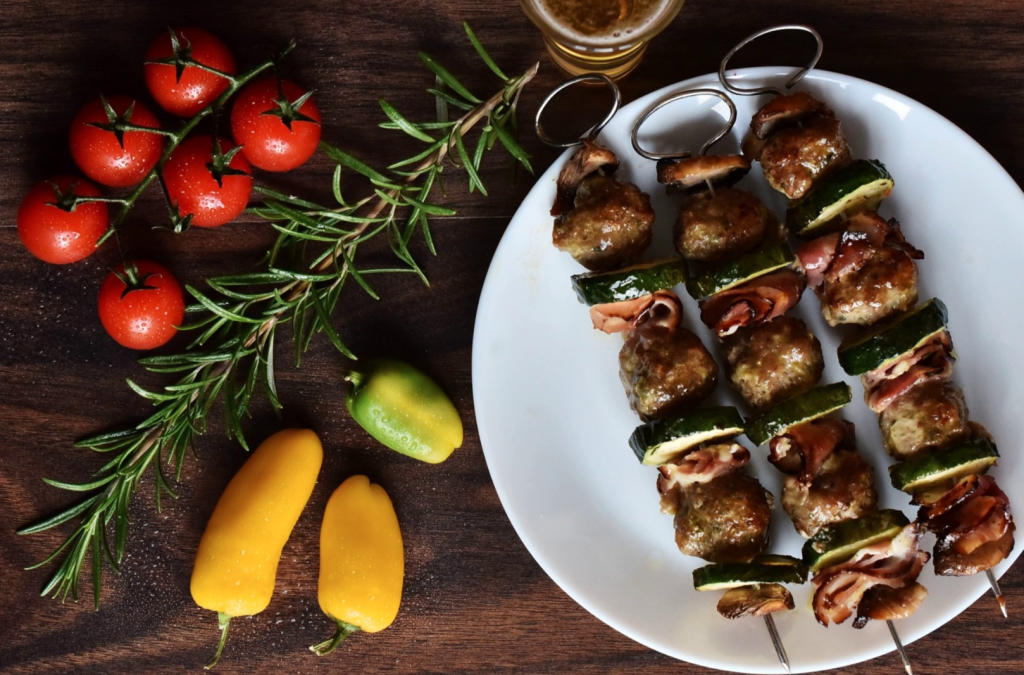

If anything deserves a love letter, it’s the history of food
Ways of Eating: Exploring Food through History and Culture by Benjamin Aldes Wurgaft and Merry White. University of California Press, 2023. 256 pp., $27.95.
This Christmas I decided to make my mother’s orange cinnamon rolls for breakfast. Although I helped my mother make them in the past, this was my first time going solo. Now I understand why she only made them once a year. As I began adding the ingredients to my bread machine, I couldn’t help but smile at the imagined commentary that she would have attached to each step of the process.
While she mixed everything by hand, kneaded and punched the dough through two proofs (and threatened us with bodily harm if we dared lift the tea towel to peek at their progress), I cut the time considerably by delegating the work to my bread machine’s dough cycle.
Mom would have sniffed at my choice of King Arthur organic bread flour, plant butter, Ceylon cinnamon, and raw cane sugar from Florida. She was happy with whatever was on sale.
When I was struggling with the rolling of the dough, she would have given me a master class in achieving the perfect tight spiral.
I found myself loudly questioning the ludicrous amount of powdered sugar that went into an orange glaze—and then snorted at the thought of her dismissing my complaints with the wave of a hand, all the while expertly zesting the oranges without any of the bitterness of rind.
The rolls were a success, if I do say so myself, and it felt good to revive a family tradition that has been on hiatus for the past few years. Although I may still be adjusting to my unwanted ascension as the matriarch of this family, making these rolls brought much-needed healing by helping us feel closer to my mom. Still, intermingled with the childhood memories that pushed their way to the surface, I recalled the more hidden stories behind the global journey these ingredients took over the past few centuries.
Each fall, I teach a course on the History of America’s Foodways. My main goal is to get students to understand just that: Food has a story. This story shapes and is shaped by cultural landscapes, personal experiences, social relationships, and history itself. Over the course of the semester, history and nutrition majors alike take a deep dive into America’s national, regional, and local foodways. They consider how the historical roots of their ancestral, familial, and community foodways are maintained, reinvented, and changed with each generation. In the five years that I have taught this course, I have worked hard to create a curriculum that challenges students to see food as more than what they eat on any given day.
I was four pages into Ben Wurgaft and Merry White’s Ways of Eating when I realized that my course merely hits the surface of what characterizes and defines our foodways. That realization began with a short passage that described a strawberry’s journey through natural and human history as it evolved from a small wild fruit in a patch of field to the domesticated berry that we purchase by the pint each summer. From there, Wurgaft and White go on to outline their book’s central themes regarding the questions that food compels us to ask about taste, smell, desire, identity, and even power. These questions, asked and answered through two complementary methodologies—cultural anthropology’s observational constructs and history’s more empirical frameworks—spark a truly delightful analysis that only an interdisciplinary approach can create.
Still, at its heart, Ways of Eating is a love letter to the anthropology and history of food. This is largely a result of the backgrounds of the two authors themselves. This mother-son duo brings much to the table with their experiences as food journalists, their training as a cultural anthropologist and intellectual historian respectively, and their shared interests and tastes. While White’s regional expertise on the food and culture of Japan adds much to the book’s discussion of the Silk Road and Asia’s early influence and impact upon food and the global exchanges taking place, Wurgaft’s training as a Europeanist and intellectual historian enhances the theoretical questions and analyses that span each chapter. Although I read a hardcover copy of the book, I was intrigued to learn that the audiobook is read by the authors themselves, and I made a mental note to check that out once time allows.
Even more interesting are the short ethnographic vignettes that introduce each chapter. While the book takes a largely chronological approach to the progression and evolution of our global village’s foodways, these short passages give the reader glimpses into the pair’s travels from one culinary mecca to another. As I finished one academic discussion about the historical roots behind England’s preference for tea over coffee or the diversity of Africa’s foodways and their impact on the Columbian Exchange, I grew hungrier with each passing vignette about kimchi, Japanese croissants, and dill pickles. I was absolutely fascinated by their chapter on curry and colonialism in India, and I mentally added a Roman banquet to my bucket list—once time travel is invented.
Meanwhile, each chapter and vignette made me increasingly realize that any region’s foodways are as much about movement and experience as they are about the changing nature of that region’s flavors and palates. My mother’s cinnamon rolls are a case in point. Outside of the more obvious historical and anthropological connections we could make with any of the ingredients, the recipe and even its preparation have changed considerably as they moved between generations of bakers. My grandmother’s recipe used coarsely ground all-purpose flour and included finely ground walnuts. She also used a plain sugared glaze that resembled royal icing. My mother’s dislike of nuts in anything other than pecan pie altered the filling, while her childhood in Florida introduced citrus flavors to the finished rolls. I kept my mother’s recipe intact but relied more on modern appliances and technological innovation to speed up the proofing process and remove any scientific proficiency with yeasted bread. In doing so, I unwittingly provided yet another example for the book’s final chapter on modernity’s influence on the ways we procure, prepare, and consume food.
Along the way I found myself jotting down a growing number of questions, as I learned about the domestication of grain, the impact of the Bubonic plague on Europe’s peasantry, and the displacement of the Lenape after the Dutch sold Manhattan to the British in order to finance their expansion into the Spice Islands. Although Wurgaft and White focus a great deal of attention on class, I was left wanting equal focus on how these global exchanges affected, impacted, and changed gender roles throughout history. My own background as a historian of slavery in the eighteenth-century Caribbean also sparked a desire for more consideration of the African Diaspora in their focus on sugar.
To be fair, the authors do state at the start that this is not meant to be a comprehensive history of global foodways, and I was thankful for that. That type of history would have put a serious damper on the book’s tone and intent. However, given the fact that gender hierarchies are often expressed through access to food, I was surprised that more direct attention was not given to the changing nature of women’s roles as these global exchanges took place. The same was true for the discussion of sugar, which largely focused on Sidney Mintz’s arguments on the crop’s role as the impetus for changes in hegemonic power in Europe rather than, say, Philip Curtin’s arguments concerning sugar’s devastating impact on Africa and its people and the crop’s monopoly on Atlantic trade. This isn’t to say that these topics are ignored completely. What my quibbles do show is that writing a global history of food requires adopting a selective strategy because of the sheer volume of evidence, examples, and time. My desire to see these topics expanded speaks more to my personal preferences and academic areas of interest than any fault of the book itself.
As Wurgaft and White state in their conclusion, the book is not intended to solve any grand debate or offer any definitive argument concerning global foodways or even the cultural significance of food. Instead, they present us with their thoughts and observations on the cultures, foods, and tastes that interest them. This becomes more and more obvious with every passing chapter and every vignette.
I closed the book with more questions than answers. Despite my minor (and self-interested) criticisms outlined above, this isn’t necessarily a bad thing. Books are meant to spark debate and create opportunities for more discussion. Ways of Eating does just that by giving us the tools we need to draw our own conclusions. Wurgaft and White insist there are no rules, and I take them at their word. Instead, they urge us to use this book as a toolkit for our own studies of food based on our own particular tastes.
Challenge accepted.
Colleen Vasconcellos is Professor of Atlantic History at the University of West Georgia. She is the author of Slavery, Childhood, and Abolition in Jamaica, 1788-1838 (Georgia, 2015) and the co-editor, with Jennifer Hillman Helgren, of Girlhood: A Global History (Rutgers, 2010).